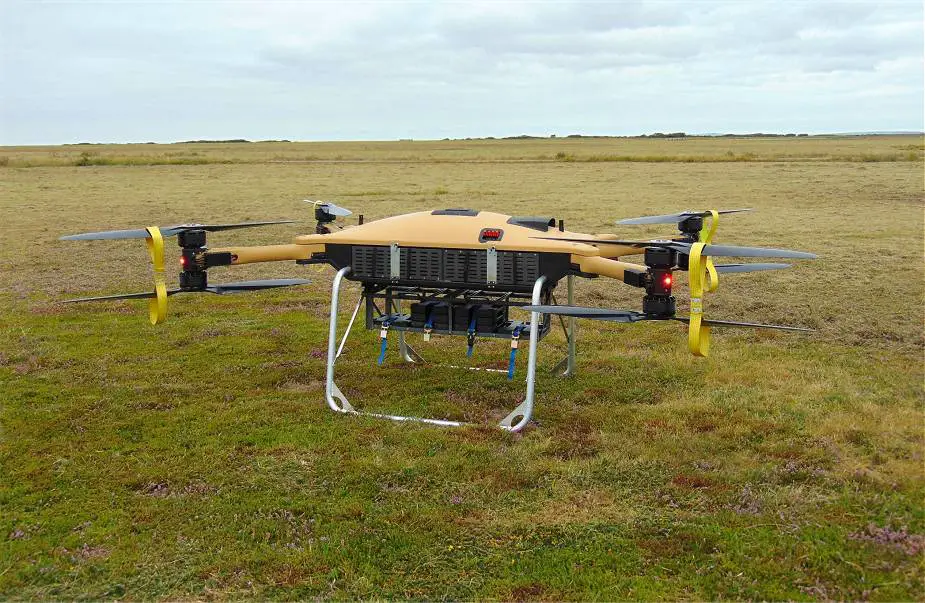British Royal Navy tests drones which could be adapted to carry supplies and cargo to ships and personnel
According to information published by the Royal British Navy on November 19, 2021, Royal Naval Air Station Culdrose hosted the inaugural Heavy Lift Challenge, calling on drone manufacturers to showcase crewless technology which could be adapted to carry supplies and cargo to ships and personnel.
Follow Navy Recognition on Google News at this link
 British Royal Navy worked with drone companies during a challenge to lift heavy loads at RNAS Culdrose. (Picture source British Royal Navy)
British Royal Navy worked with drone companies during a challenge to lift heavy loads at RNAS Culdrose. (Picture source British Royal Navy)
The competition was a chance for the navy to test how it can quicken the procurement process and get off-the-shelf, readily-available tech into the hands of sailors and marines sooner.
The British Royal Navy and Royal Marines have already put a range of drones through their paces, demonstrating the ability to lift and deliver payloads in excess of 100kgs, including a drone system used to deliver post in trials by the Royal Mail. The next stage is to see what equipment exists which could carry a heavier load of up to 300kg.
Organized by the Navy’s drone experts 700X Naval Air Squadron, Defence Equipment and Support (DE&S) and the Office for the Chief Technology Officer RN, the competition saw two companies – Malloy Aeronautics and W Autonomous Systems – awarded £300,000 contracts to develop their remotely piloted air systems (RPAS) to lift beyond 200kg.
One of the drones taking part in the challenge proved its ability to deliver other supplies in trials earlier this year which saw the Royal Mail deliver post to the Isles of Scilly.
At Predannack Airfield near Culdrose, they had to carry payloads in excess of 100kg – that’s more than two fully-loaded Royal Marines bergen backpacks – and pass tests for speed, endurance and accuracy of payload delivery.
In the future, drones could be used to transport cargo autonomously, delivering vital supplies like ammunition, spare parts and first aid to personnel on the front line. This would lead to lower operating costs as well as protecting personnel by sending uncrewed systems into conflict zones.


























